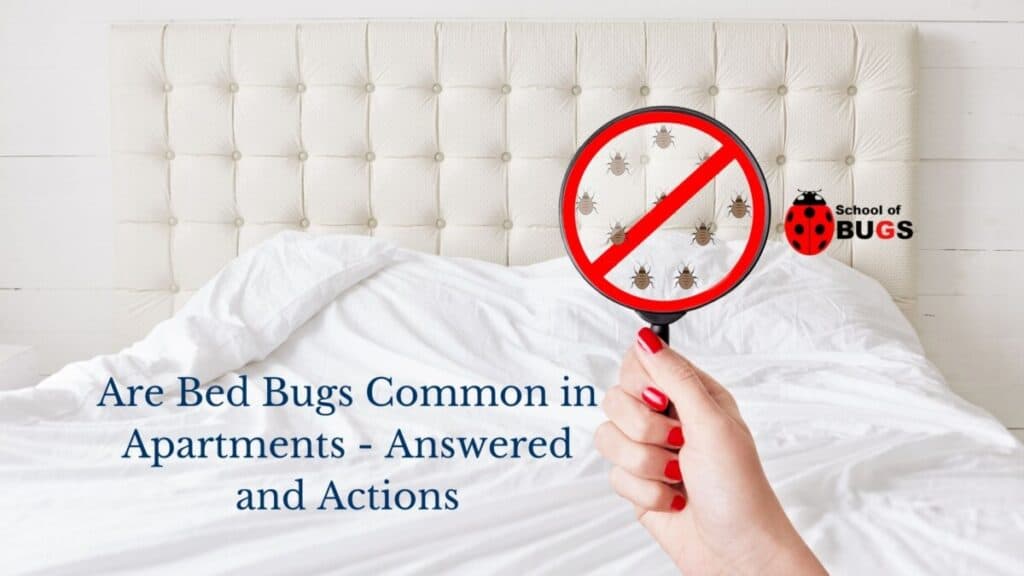
Few pests are more unwelcome in apartments than bed bugs. In addition to being an annoyance, these surprisingly hardy critters can also be a health hazard.
So if you live in an apartment, you might wonder how common bed bugs are. And if you have them, you’ll want to know how to kick them out too!
In this article, we’ll dive into the following points:
- Apartments are among the most common sites for bed bug infestations.
- Bed bugs seek out warmth and blood, not dirtiness.
- People spread bed bugs through their clothes and furniture.
- Bed bugs typically hide in tight crevices and upholstery.
- Bed bugs often require professional help to eliminate.
- Heat and chemical treatments are excellent for exterminating bed bugs.
- Vacuuming and reducing clutter helps prevent infestation.
How Common Are Bed Bugs in Apartments?
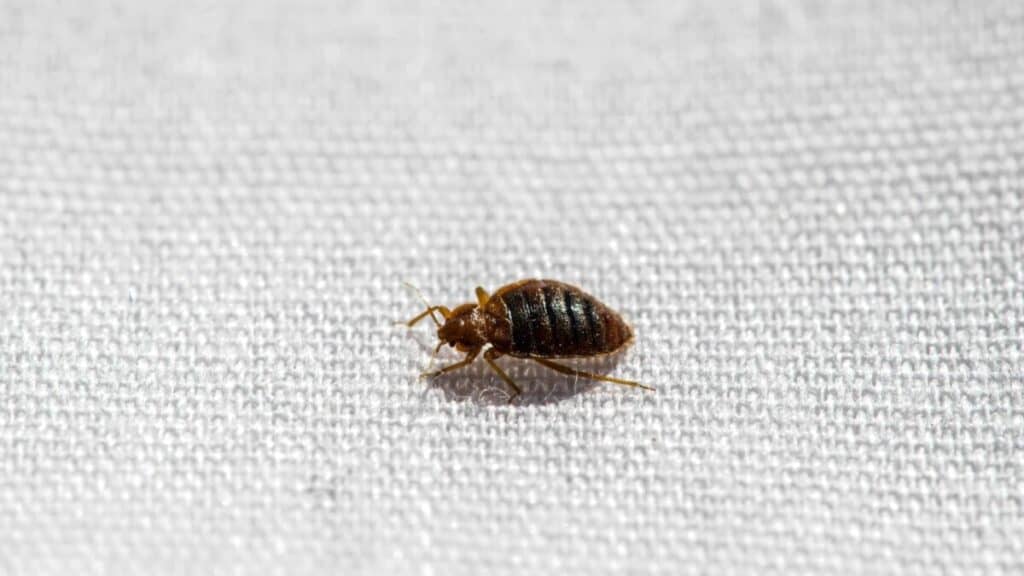
Apartments are one of the most common places that bed bugs infest.
A 2018 survey of pest control specialists asked where they treated bed bug infestations within the last year. A whopping 89% percent said apartments, second only to single-family homes at 91%.
Another study evaluating thousands of apartment buildings near New Jersey estimated an average infestation rate of 12.3%. Meaning over 1 in 10 apartments had these unwelcome critters.
Their prevalence isn’t surprising when you consider that apartments make the perfect home for these creatures. And once an infestation is discovered, it can be notoriously challenging to eliminate.
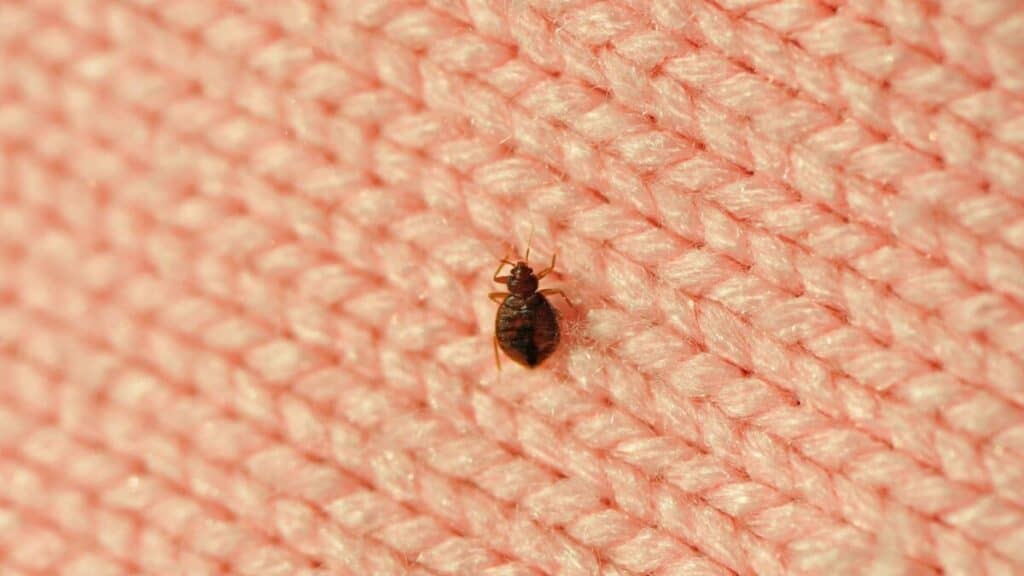
Additionally, bed bugs live in all 50 states. So even if you live in a place with harsh winters, you can still encounter them.
Bed bug infestations most commonly occur in urban areas with densely-packed populations. However, they’re also encountered in rural areas, particularly when an apartment’s inhabitants travel often.
What Attracts Bed Bugs to Apartments?
There’s a common misconception that bed bugs are attracted to filthy places. However, bed bugs don’t discriminate based on cleanliness when looking for places to infest.
The truth is a little more unsettling—according to the EPA, bed bugs seek out warmth, blood, and carbon dioxide. All of which humans have in spades.
And since apartments are typically full of people, they’re a prime target for these creatures.
Another reason apartments are a haven for bed bugs is their design.
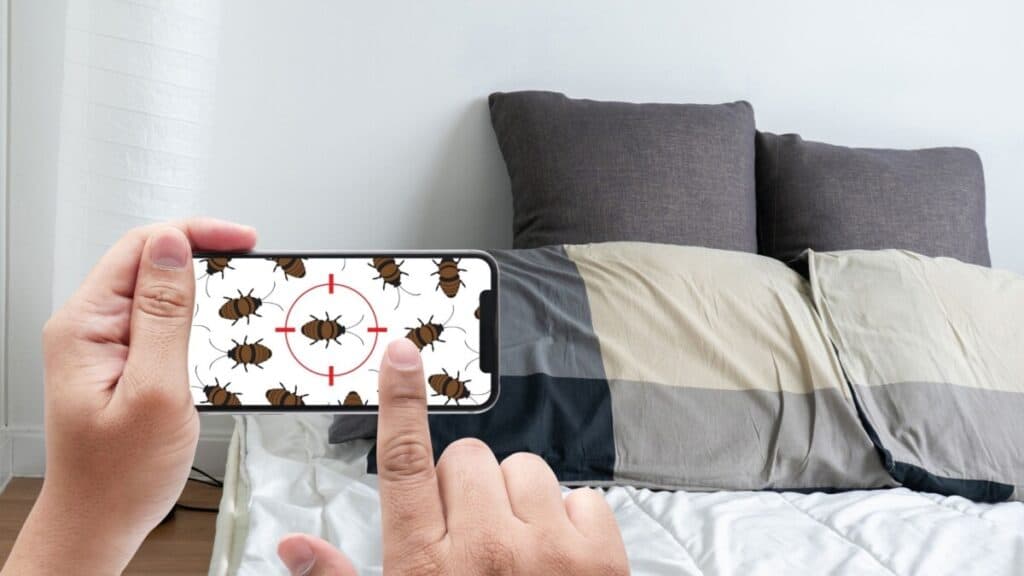
Bed bugs spread rapidly indoors, making closely-packed living units in apartments easy-pickings. And it only takes one apartment infestation for them to keep multiplying.
Plus, tenants often don’t even realize they have bed bugs. Meaning that the problem can get pretty severe before it gets noticed.
This makes it even more likely that they’ll spread to other units or wherever that tenant carries them.
How Do Bed Bugs Get In Apartments?
Now you know why bed bugs are a common pest in apartments. But that doesn‘t explain how they get in our homes in the first place.
These critters sneak into apartments primarily through two methods.
One way is by moving from another nearby infested area. So if your neighbor down the hall has a bad infestation, it can spread to your apartment.
Sometimes bed bugs crawl through carpets and find their way under your door. Other times, they’ll travel through crevices in your apartment’s walls and baseboards.
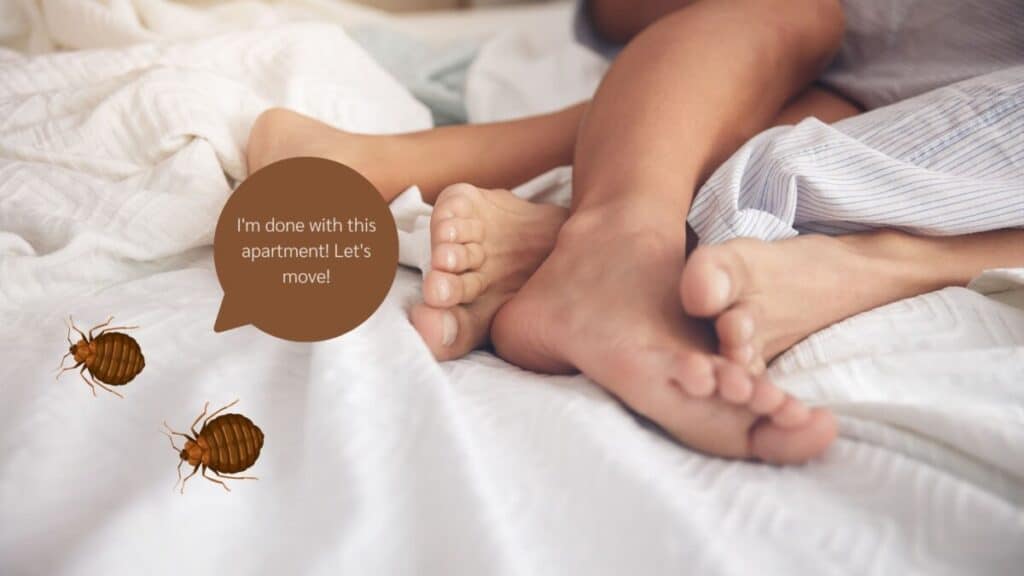
Bed bugs also spread by hitching a ride on humans and our stuff.
If you visit a friend who has an infestation, some bugs might hide on your clothes. After returning to your apartment, they’ll hop off and make themselves at home.
Plus, these critters may also hide in things like used furniture. So, inspect any pre-owned sofas or pillows before bringing them home.
Either way, it only takes one room having bed bugs for an entire building to become infested.
So if you have them, chances are someone else nearby does too.
How To Tell If You Have Bed Bugs
There are several ways to verify whether or not you have bed bugs:
- Closely examine your sheets and pillowcases – If you notice bloodstains, dark fecal spots, or tiny insect skins, you may have bed bugs. Using light-colored sheets makes seeing these things easier.
- Check your body for bites – Bites are typically red, itchy, and form a line or cluster. Most bites are tiny, but they can be large and hive-like if you‘re allergic.
- Search for bed bug eggs – You can typically find bed bug eggs in tight crevices of furniture and upholstery. Such as between cushions or along the seam of your mattress. Eggs are pearly white, come in clusters, and are only about 1mm long.
- Finding a live bug – Bed bugs are tiny (5-7mm long) and reddish-brown. They’re typically flat and shaped like an oval or balloon. You can ordinarily find them in tight crevices, upholstery, carpet, wood, and around your bed.
Despite their name, bed bugs make homes in places besides your bed.
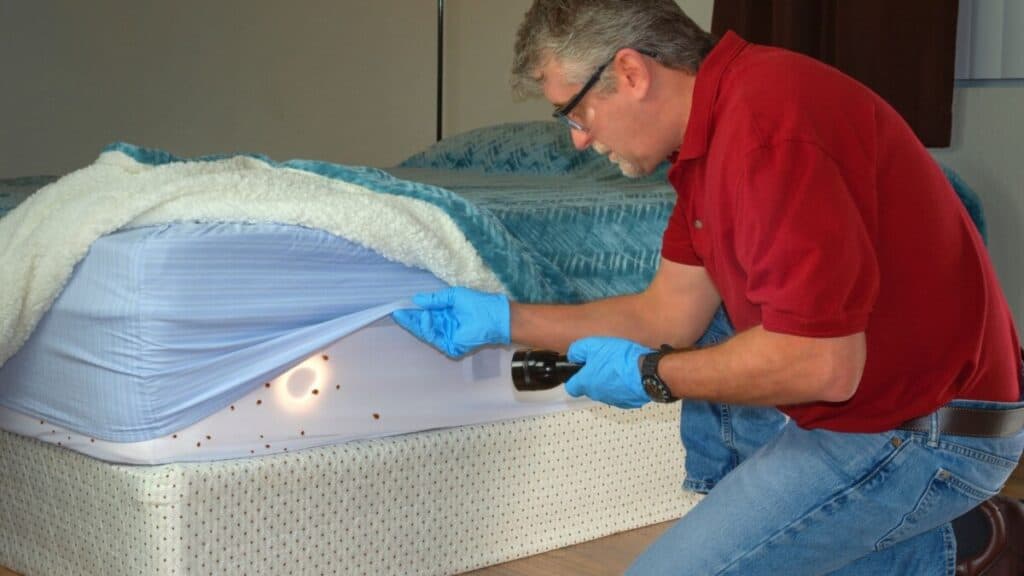
So make sure to move around furniture and check along your walls. Also, take the time to examine crevices in your baseboards and drawers with a flashlight.
What Should I Do If I Find Bed Bugs?
After confirming you indeed have bed bugs, it’s vital to take action immediately.
Because the longer it takes to remove them, the more likely they are to spread.
While you may handle ants and flies fine on your own, bed bugs are a different beast. Especially in an apartment complex, where other tenants can be affected.
So if you find any in your rooms, promptly let your landlord know.
They should contact the professional pest service that handles your building, assuming you have one. Those exterminators will determine what treatments are necessary to eliminate the infestation.
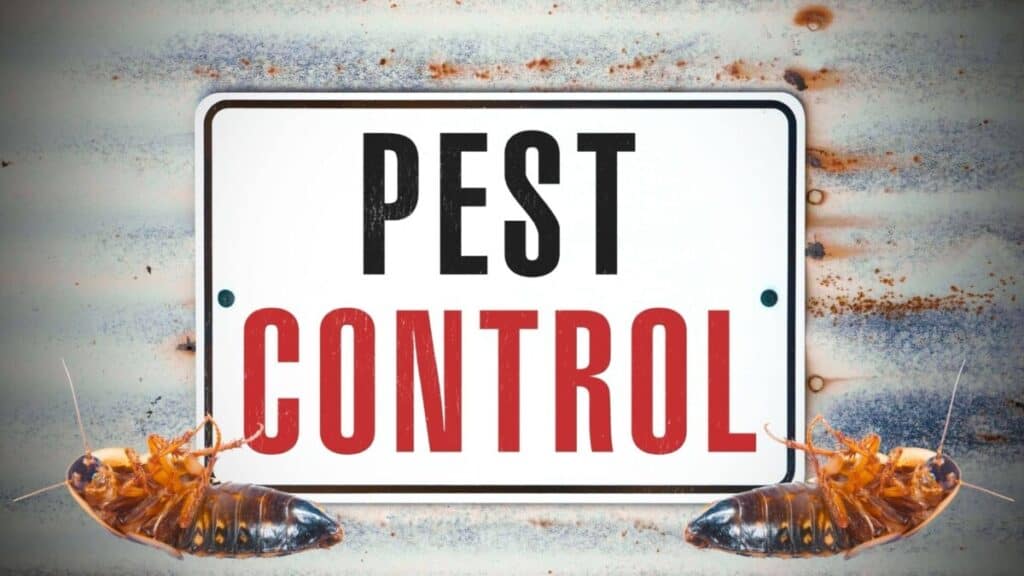
Your landlord will also likely check with your neighbors to see the extent of the problem.
However, know that removing bed bugs is no small task.
It can take weeks or months to get rid of them entirely. And you may need to leave the premises for a day or two during treatments.
Responsible Precaution You Should Take
After contacting your landlord or pest control, there are some precautions you should still take. Not only for your benefit but also to protect others:
- Don’t remove furniture out of your apartment before or during extermination – Doing so can spread bed bugs to other rooms or homes.
- Use a bedbug-proof mattress encasement – These specially-designed covers prevent new bed bugs from invading your mattress. Plus, it’ll trap and starve the ones already in it. You can find them easily online or at stores that sell bedding.
- Kill the bugs on your clothes – Washing in hot water, dry cleaning, or tumble drying at high heat for 30 minutes will kill all bed bugs on clothes. Double-bagging your linens helps prevent reinfestation.
- Vacuum your apartment thoroughly – While it won’t stop the infestation, vacuuming will limit bed bug spread. Just make sure to remove the vacuum bag outdoors and into another sealed bag.
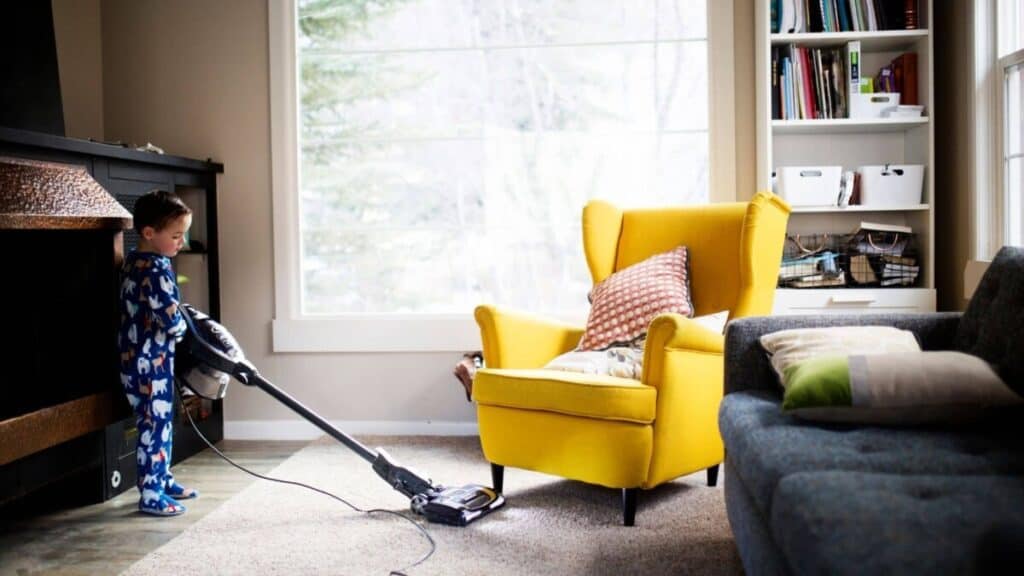
How Do You Get Rid of Bed Bugs?
You might be in a situation where you have to handle the infestation yourself. Or need to wait weeks for an exterminator to help.
In those cases, you have some DIY options for tackling a bed bug problem:
- Heat treatment – Putting clothes in your dryer on high heat for 30 minutes will kill bed bugs. Bed bug heaters can also do the trick by significantly raising the temperature of a single room.
- Chemical treatment – You can buy pesticides specifically formulated for bed bugs online or in stores. However, make sure you use them safely by carefully following instructions.
- Steam treatment – Since bed bugs are vulnerable to heat, portable steam cleaners exterminate them efficiently. Hot steam can also reach deep into crevices in baseboards and upholstery.
- Cold treatment – If you have a freezer, consider placing infested items in it for a few days to kill any critters. However, ensure that they’re securely sealed in bags first. And verify that your freezer reaches freezing temperature.
A combination of methods might be necessary to eliminate bed bugs. And you may need to treat some areas multiple times.
How Do You Prevent Bed Bugs?

Getting rid of bed bugs is one thing, but keeping them away is another.
Here are some precautions you can take to reduce your chances of infestation:
- Remove trash and clutter – Bed bugs often hide beneath dirty clothes and garbage. Decluttering your house will give them fewer places to live.
- Seal any crevices or cracks in your home – bed bugs can get through surprisingly tiny spaces. So close up any openings in your baseboards or walls.
- Vacuum often – Bed bugs often hide in your carpet when first spreading to your home. Frequent vacuuming will help prevent any of them from staying long.
- Don‘t store items under your bed – Bed bugs can easily hide in clothes and boxes beneath your box spring.
- Tumble dry clothes and bedding on high heat – Doing so should kill any bed bugs on those items.
- Cover or plug your power outlets when not in use – Bed bugs can sneak in and out of walls through outlets.
Conclusion
Bed bugs are surprisingly common in apartment buildings. If you notice any in your rooms, you should contact your landlord and get professional assistance.
You can also help prevent bed bug infestations by keeping rooms tidy and frequently vacuuming.
Alright, that’s it for this article, here are a few hand-selected articles that you might also find interesting reads:
How Many Bed Bugs Are in a Bed – 3 Different ScenariosCockroaches That Look Like Bed Bugs – 3 Common Examples
Little Flat Brown Bugs in House – What Are They?
Recent Posts
Tiny Black Bugs in Bathroom NO WINGS: What They Are and What to Do!
Finding tiny black bugs in your bathroom can be uncomfortable, to say the least. Especially if they are persistent, or they appear in very large numbers, which they often like to do. When it...
Tiny Black Bugs in Plant Soil - What Are They & What To Do About It
A short horror story: You get a new houseplant. You do your best to take care of it. You’ve ensured that it has the right soil, the right amount of sun, it gets enough water. And then one day, you...

